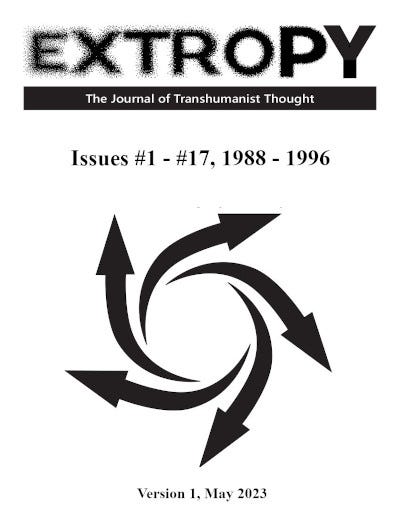New adventures in the VR metaverse
Project: a VR microverse powered by Croquet.
Greetings to all readers and subscribers, and special greetings to the paid subscribers!
Please scroll down for the main topic of this newsletter. But first:
I’m pleased with the result of my Discord voice chat recording test. The audio is crisp and clear. Therefore, I’ll host regular meetings in the Turing Church Discord server, starting in a couple of months, and publish the audio recordings in the Turing Church podcast. If you haven’t joined the Turing Church Discord server, please join!
Terasem will restart publishing the Terasem Journals: The Journal of Geoethical Nanotechnology and The Journal of Personal Cyberconsciousness.
Terasem is issuing a call for papers for The Journal of Personal Cyberconsciousness Vol. 11, Issue 1 - 2023, to be published in December. The issue will be focused on Artificial Intelligence (AI) and machine consciousness.
Submissions are welcome. Articles can be submitted to editor@terasemjournal.com, or directly to me (please use Google Drive if you send an article to me).
A related Terasem Colloquium dedicated to AI and machine consciousness will be held on December 14, via Zoom.
I maintain an archive of available scans of the late lamented Extropy print magazine in the Github subrepository Extropians/Extropy. The archive is complete - all issues of the magazine (1–17) are available as PDF scans - but volunteers are needed for some more work.
This PDF document contains a compressed version of the full archive (17 issues) of the Extropy magazine uploaded to the Extropy subrepository before May 2023.
Please note that these are rough PDF scans of the paper magazine. The Extropy subrepository will be updated with better scans when they become available.
If you have some paper issues of the Extropy magazine and want to contribute, please join the Extropians repository, produce high quality scans of your issues, and upload them to the Extropy subrepository.
The ideal outcome of this project would be a freely downloadable EPUB ebook with all the issues of the Extropy magazine, easily readable and well-formatted, with images, TOC, index and all. But a PDF ebook with searchable text would be a good intermediate outcome that the world needs.
Some time ago (second half of the 2000s and first half of the 2010s) I was quite active in the Virtual Reality (VR) metaverse. Now I’m experimenting with VR worlds again and thinking of new adventures in the VR metaverse.
I’ve been experimenting with Croquet, which I think is the most promising Virtual Reality (VR) metaverse platform around. I have created two very simple test worlds and published them via Github pages (access info in my Github notebook).
Visitors van enter Croquet worlds using VR headsets, but also using a browser (no special client software needed) on computers and smartphones. Croquet is open source, is built for interoperability, and can be freely deployed on any server, even a simple one. Almost everything happens in the client. I could go on and praise Croquet for hours, but listen to David Smith instead:
Parts of Croquet are still in beta but the project is developing fast, and my experiments have persuaded me that Croquet is built on rock solid foundations. Very soon, I think, Croquet will be used to produce stunning VR worlds and avatars.
The last Croquet update has introduced realistic avatars in Croquet worlds. In these pictures I’m using a custom remote avatar that I made with Ready Player Me. The face of the avatar was generated automatically from a selfie.
As I said, the Croquet software is open source and can be freely deployed. The operators of Croquet worlds will be charged for using the Croquet Reflector Network.
I’m pausing this project for a little while, but I’ll restart it in two or three months. I’m planning to reawaken my dormant 3D/VR design skills and create a nice social VR microverse (a small VR world) with Croquet Microverse World Builder. I hope it will become a meeting place for groups like Turing Church and Terasem.
I have some design ideas. Graphics will be minimalist for efficiency (and also because I like minimalist design), but also visually compelling to give the sense of an enchanted place of power. I’m thinking to build a VR microverse loosely inspired by the launch area at Starbase, the home of SpaceX’s Starship development and testing.

This project will be open source and published in Github. Of course I’ll be looking for collaborators. If you have 3D/VR design skills and want to participate, watch my Github notebook and profile and join the project when it goes live.
In the meantime, please write to me or comment here if you want to give design input, or if you just want to be involved. And please join the Turing Church Discord server, which has a project discussion forum in the #virtual-reality channel.




